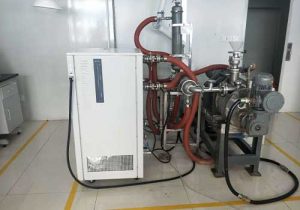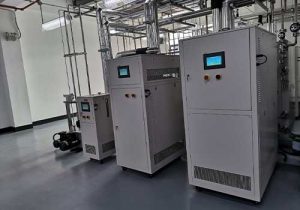water cooled chilling plant
Water-Cooled Chilling Plants: Types and Technology
Water-cooled chilling plants are used extensively to provide cooling for buildings and processes in various sectors. These plants operate on the principle of the refrigeration cycle, which involves transferring heat from a lower temperature reservoir to a higher temperature reservoir. The global water-cooled chillers market size reached US$ 4.8 billion in 2023 and is expected to reach US$ 5.6 billion in 2032, exhibiting a growth rate (CAGR) of 3.2% during 2024-2032.

There are several types of water-cooled chillers, including centrifugal, reciprocating, scroll, and screw chillers. Each type serves specific needs based on cooling capacity and application requirements. The operation of these chillers involves four main components: a compressor, condenser, evaporator, and expansion valve.
Applications of Water-Cooled Chilling Plants
Water-cooled chillers find extensive applications in various industries. In the manufacturing sector, they help control temperatures during production processes, ensuring product quality. They are also commonly used in Heating, Ventilation, and Air Conditioning (HVAC) systems for cooling purposes, providing efficient cooling to air handling units and allowing for precise temperature control. Additionally, water-cooled chillers play a crucial role in power generation, cooling turbines, generators, and other equipment to ensure efficient operation and prolong their lifespan.

Industry Trends
Current trends in the water chillers market include the adoption of eco-friendly refrigerants, integration of smart controls and IoT technology, and customization to meet specific customer needs. These trends reflect the growing focus on environmental sustainability and energy efficiency in the industry. The market is also moving towards more efficient and economical first-cost solutions while maintaining flexibility and lower life cycle costs.
Optimization and Energy Efficiency

Optimizing water-cooled chiller plants is crucial for enhancing energy efficiency. A study proposed a global optimal control strategy for chiller plants integrated with small-scale stratified chilled water tanks, focusing on improving energy performance under constant electricity tariffs. This strategy aims to minimize the overall energy consumption of chilled water plants, including chillers, pumps, and cooling towers, and can enable thermal storage to be more widely integrated into early-built buildings’ chilled water plants without the need for large-scale tanks.
Conclusion
Water-cooled chilling plants are essential for cooling in various applications, from industrial processes to HVAC systems. The global market for water-cooled chillers is growing, driven by the increasing demand for chilled water systems and the focus on energy efficiency and environmental sustainability. As technology advances, the integration of smart controls and eco-friendly refrigerants will continue to shape the future of water-cooled chilling plants, making them more efficient and environmentally friendly.
Related recommendations
Low Temperature Chiller Equipment for Hydrogen Production Machine
1771Low Temperature Chiller Equipment for Hydrogen Production Machine In the hydrogen production process of water electrolysis, once the temperature rises uncontrollably, the hydrogen production...
View detailsindustrial heating
569Industrial Heating: A Comprehensive Overview Introduction to Industrial HeatingIndustrial heating refers to the application of thermal energy in the production, treatment, or alteration of manu...
View detailsCommonly Used Auxiliary Accessories for Industrial Chillers
1779Commonly Used Auxiliary Accessories for Industrial Chillers As a professional cooling equipment, in addition to the basic shell, the industrial chiller also has many auxiliary accessories. O...
View detailsfreeze chiller
386Introduction to Freeze Chillers Freeze chillers, also known as freezing chillers, are unique cooling systems that utilize the freezing process of a refrigerant to achieve cooling. These systems...
View details
 LNEYA Chiller
LNEYA Chiller







HelloPlease log in